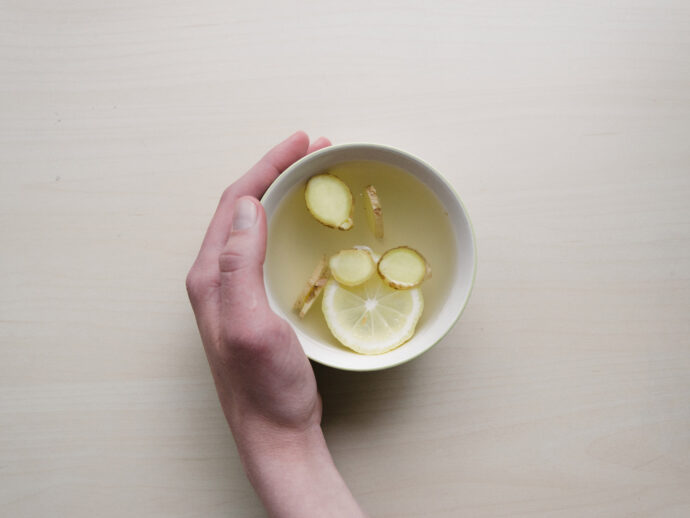
More than 20 million Canadians suffer from digestive issues each year. Now that the holiday festive season is a wrap, we’re wondering: how’s your gut doing? We have some ideas that might make it happier.
With the New Year under way, and happy festive memories safely tucked in long-term storage, we’re wondering: how’s your gut doing?
Did you know?
More than 20 million Canadians suffer from digestive disorders each year, including heartburn, irritable bowel syndrome (IBS), gastric ulcers, gastroesophageal reflux disease (GERD), and celiac disease.
We know it’s hard not to overindulge through the holiday season, but sometimes the festive afterglow of all those happy occasions is overshadowed by a very unhappy digestive system. If you’ve experienced symptoms such as heartburn, upper abdominal fullness, stomach pains, bloating, or nausea, we have some advice for you.
What makes proper digestion so important?
The body uses what we eat for energy, cell repair, and growth, so healthy digestion allows our body to work optimally to help us stay healthy.
The digestive system is made up of several organs that aid in the digestion of food and the transportation of nutrients around the body. Bacteria in the intestines (also known as our gut microbiome) play a critical role in maintaining healthy digestion.
Read on for some ideas to help promote a happier, healthier gut with a few dietary tweaks.
Low-fructose foods
For anyone prone to gas and bloating, too much fructose from fruits and other foods may be a problem.
Did you know?
With fructose malabsorption, fructose is not fully absorbed in the small intestine, which causes the excess fructose to pass into the large intestine. There, the fructose feeds gut bacteria and fermentation occurs, which then causes unpleasant symptoms such as bloating, gas, constipation, or diarrhea.
Choosing low-fructose foods is a great way to reap all their important vitamins and nutrients (including fibre) without creating havoc in your gut.
Give it a try
Enjoy more low-fructose fruits and veggies with your meals or as part of your healthy snack each day. Here are just some to try:
- apricots
- avocado
- beetroot
- broccoli
- cauliflower
- grapefruit
- rhubarb
You can find out more about fructose malabsorption on alive.com.
Ginger
With its history of use in ancient medicine, ginger has played a long and important role in supporting digestion and alleviating discomfort and pain in the gut. Ginger works to reduce gas and helps soothe the intestinal tract, which is why it’s also used as a natural remedy for nausea.
Ginger also has anti-inflammatory properties, making it useful for those with chronic pain due to inflammation from, for example, osteoarthritis and rheumatoid arthritis.
Give it a try
Grate fresh ginger into your salads, stir-fries, soups, and smoothies, or use them to class up your desserts.
Check out alive.com for scrumptious gingered recipes like Kiwi Carpaccio.
Papaya
Papayas are rich in several vitamins and nutrients. Their high water and fibre content help promote bowel regularity and support healthy digestion.
Did you know?
A 100 g serving of papaya contains more vitamin C than the same amount of oranges—103 percent of our recommended daily intake.
Papayas contain papain, a protease enzyme that acts similarly to pepsin (our gastric juice) to break down proteins in our digestive system, aiding in digestion. This makes papayas a great fruit choice for keeping our gut happy. They’re also rich in other proteases that help reduce inflammation and pain associated with inflammation.
Give it a try
Make a tropical fruit salad, add it to smoothies, or make a tropical salsa for black bean burgers or fish tacos.
Check out alive.com for more papaya-loving recipes like our Forbidden Thai Pudding.
Tempeh
Made from whole soybeans that have been fermented, tempeh is known to have a more complex texture than tofu. Tempeh is often described as nutty and chewy. It’s also an incredible source of plant-based protein, iron, and calcium.
Tempeh helps support healthy digestion with its natural probiotics. Research has found that certain probiotics help alleviate symptoms of IBS, such as reducing bloating and promoting regular bowel movements.
Tips for cooking tempeh
- Boil tempeh for about 10 minutes to allow it to soften.
- Slice and coat in nut- or seed-based sauce. (Try mixing together peanut butter, chili flakes, honey, tamari, and whatever else you might like.)
- Let it sit in marinade for at least 30 minutes or up to 2 hours.
- Pan-fry marinated tempeh pieces for 2 to 3 minutes a side, or until crispy.
Give it a try
Tempeh is delicious served on salad or with a side of basmati rice and greens.
Check out more tasty tempeh treats such as Broccoli Caesar with Smoky Tempeh Bits at alive.com.
Dark leafy greens and cruciferous vegetables
Kale, spinach, and Swiss chard are all excellent sources of fibre and other important nutrients such as iron, calcium, and potassium. Fibre found in some dark leafy greens act as prebiotics, which help feed our good gut bacteria, which in turn help keep our digestive system healthy and functioning optimally.
Eating a diet rich in cruciferous vegetables including cabbage, broccoli, and Brussels sprouts has been associated with improved gut bacterial communities. Supporting the gut microbiome further helps promote healthy digestion and a happy gut.
Give it a try
Include dark leafy greens or cruciferous veggies in soups, stews, smoothies, salads, and pasta dishes.
Check out some of the hundreds of delicious recipes on alive.com that star your favourite gut-loving veggies.



































